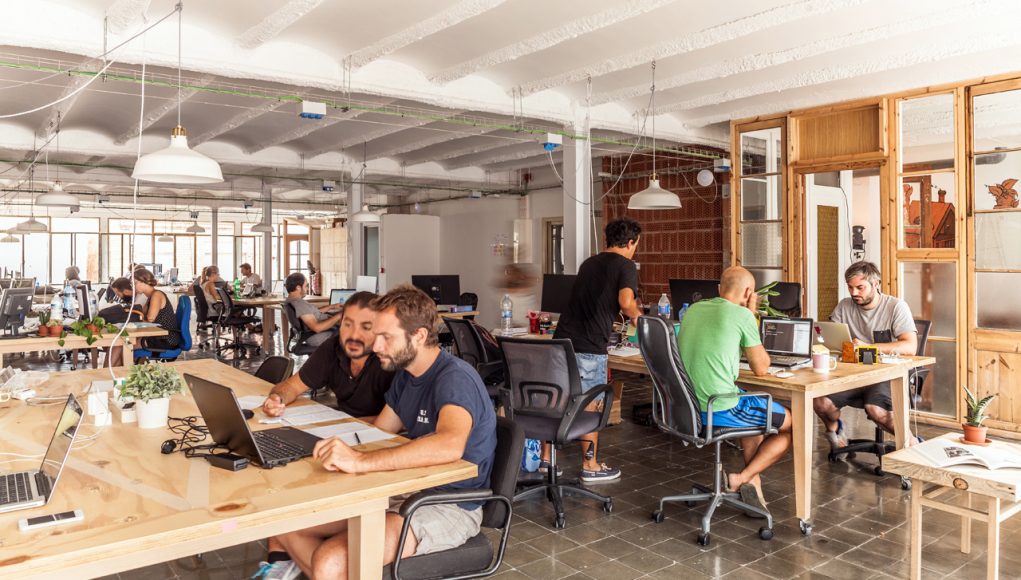As far as an employee’s productivity is concerned,
. And is it more favourable than a work-from-home environment?
These questions are being widely debated today among human resource experts and researchers across the globe. The rising acceptance of co-working spaces among entrepreneurs, consultants, and freelancers have forced experts to study factors that work in its favor.
Last year, Harvard Business Review published a survey which revealed that people working in co-working spaces are more productive than employees who work in regular offices.
Another study by a private firm reveals:
than their previous traditional working setups. Further, 64% co-workers say they have completed their task on time.
Every co-working space can’t enhance productivity equally as a lot depends on its inspiring design, regular registered members, innovative and collaborative work settings and positive environment among many other things.
However, there are also cases of co-working spaces turning into a chaotic and noisy place instead of becoming a hub of creativity. Such areas have negatively impacted the creativity and concentration level of an individual. It happens when creators ignore the fundamental elements of co-working spaces.
So, what makes co-working spaces an ideal place for productive output?
Absence of office politics
One of the primary reasons
is that entrepreneurs get to work with professionals having diverse backgrounds and working on different projects.
There is no job rivalry among them. Individuals don’t need to depend on negative traits such as flattery, sycophancy, backbiting, etc. to score brawny points from their working managers.
Individuals don’t need to depend on negative traits such as flattery, sycophancy, backbiting, etc. to score browny points from their working managers.
Experts agree that in a traditional office environment, often unhealthy rivalry among employees dampens their enthusiasm which impacts their productivity level. The negative energy works in a regressive manner, and it pays to neither the organization nor the employees in the long run.
Often when underserved people earn senior’s praise and recognition, it demotivates the real working force of the company which hinders overall output. The unhealthy professional rivalry also leads to mental stress which again hurts a professional’s output.
Unlike a traditional work set-up, where employees instead of concentrating on their professional targets invest time to look for ways for short-cut success routes, a co-working environment is relatively free from all these kinds of negative sentiments.
Since working profile of people is different, co-working provides a healthy mix of talent aiming to perform high-quality work as well as job satisfaction.
An attitude to help each other and co-operate enthuse a sense of community and collaboration among members which not only creates a positive feeling among individuals but it also provides the opportunity to learn.
Many companies which have created co-working spaces within their office premises acknowledge their benefits. Such companies invite employees from other businesses and startup firms to come and work with their staff who are otherwise accustomed to working in a traditional office set up.
The exchange of ideas and professional expertise turns work into a refreshing experience for each member of such co-working group.
Be your own boss
Human Resource experts believe that freedom to choose flexible work hours; working group, place of work, etc. provide a lot of convenience to professionals who reflect in work output.
For instance, you are in an office, and you get a call from home that your AC has gone out of order. While in a traditional work set up, you have to either take half day off or postpone AC repair for the weekend. A small issue like this bugs an employee down and impacts his productivity. However, in a co-working set up, he is free to choose his working hours. He or she doesn’t need to wait for the weekend to finish many household chores.
Co-working spaces are open 24-7 which gives freedom to work when one feels like. Forcing working hours on employees doesn’t maximize their output. It rather frustrates them.
Even if you don’t feel like working, till you clock 8 to 9 hours in an office, you can’t sign off for the day. Co-working culture doesn’t have such limitations.
There is no denying the fact that you are your own boss when you are working from home. However, it has many distractions which reduce your productivity significantly.
Household chores keep distracting you from your work to dozens of other tasks. Also, working from home often becomes monotonous, lacking encouraging or energizing experience. However, a collaborative workspace provides an answer to these problems.
Excellent networking augments efficiency
Co-working brings you in contact with other professionals with different skill sets and who are in most cases willing to help.
For instance, if you are writing something and you are not able to phrase a sentence correctly, you can always ask for help. Often collaborative workspaces provide mentorship based on mutual respect and relationship rather than monetary terms and conditions.
Or if you are stuck on a problem as an IT developer or a web designer, you might ask for advice from people with relevant professional experience.
Conclusion
A success of any professional environment depends on the productivity of its people. If it helps boost the productivity, it becomes popular and replicable. Perhaps that’s the reason collaborative workspace has become a craze today.
Even well-known companies are not only realizing its benefits, but they also want their employees to experience and enjoy it. Venture capitalists are heavily investing into companies like WeWork, realizing that it’s going to be the most preferred working model in the observable future. It has emerged as one of the best models for work-life balance. You can keep you work life separate from your professional life and enjoy the both.
What do you think? Do you prefer working from a co-working space? Or do you have another preference? Let me know in the comments below!
For more business tips, check our entrepreneurship section and subscribe to our weekly newsletters.






